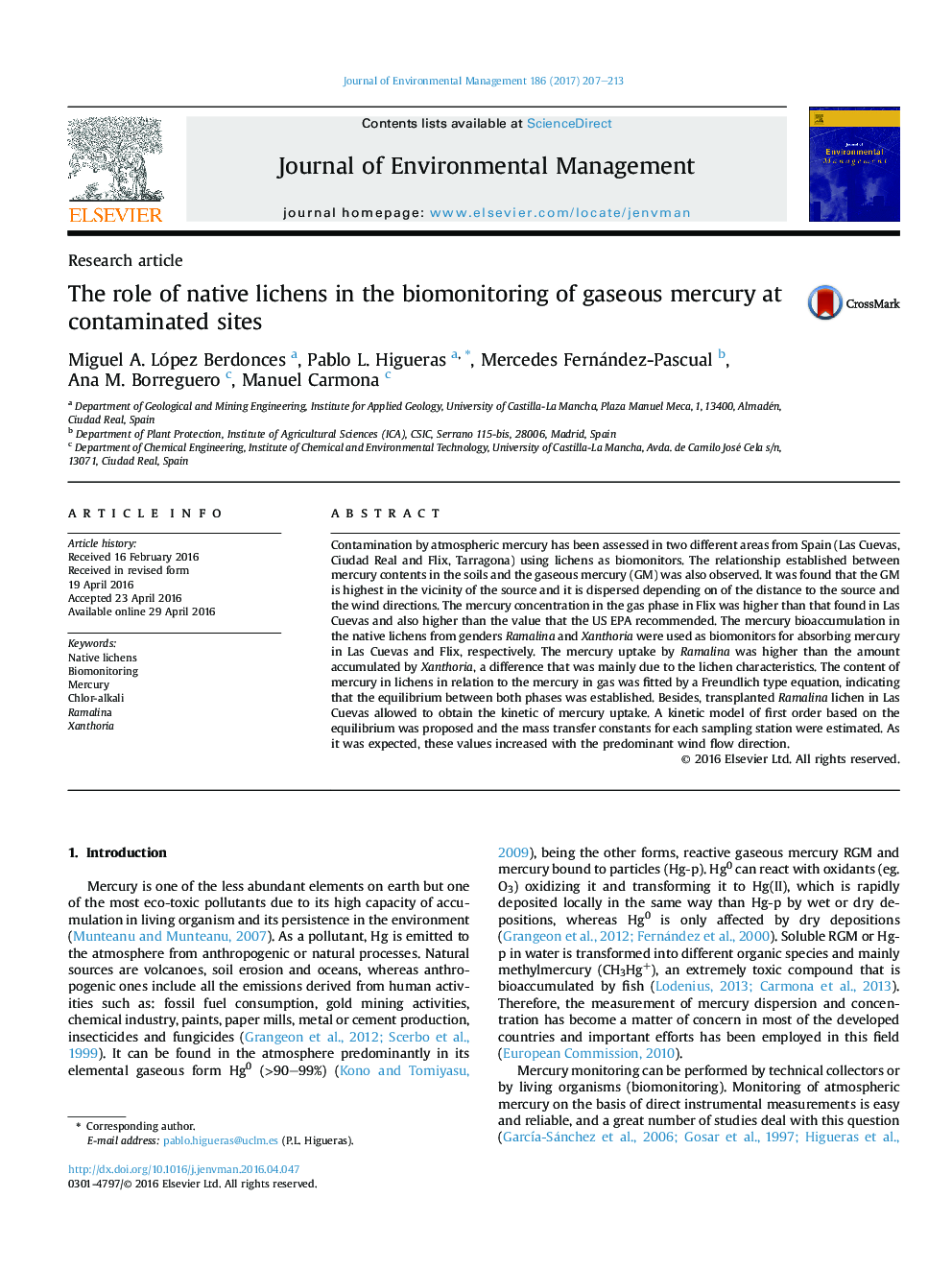| Article ID | Journal | Published Year | Pages | File Type |
|---|---|---|---|---|
| 5117420 | Journal of Environmental Management | 2017 | 7 Pages |
â¢Comparison of instrumental and biological data for Hg monitoring is presented.â¢Different species of native lichens show different uptake models.â¢Uptake kinetics appears as related with meteorological conditions.
Contamination by atmospheric mercury has been assessed in two different areas from Spain (Las Cuevas, Ciudad Real and Flix, Tarragona) using lichens as biomonitors. The relationship established between mercury contents in the soils and the gaseous mercury (GM) was also observed. It was found that the GM is highest in the vicinity of the source and it is dispersed depending on of the distance to the source and the wind directions. The mercury concentration in the gas phase in Flix was higher than that found in Las Cuevas and also higher than the value that the US EPA recommended. The mercury bioaccumulation in the native lichens from genders Ramalina and Xanthoria were used as biomonitors for absorbing mercury in Las Cuevas and Flix, respectively. The mercury uptake by Ramalina was higher than the amount accumulated by Xanthoria, a difference that was mainly due to the lichen characteristics. The content of mercury in lichens in relation to the mercury in gas was fitted by a Freundlich type equation, indicating that the equilibrium between both phases was established. Besides, transplanted Ramalina lichen in Las Cuevas allowed to obtain the kinetic of mercury uptake. A kinetic model of first order based on the equilibrium was proposed and the mass transfer constants for each sampling station were estimated. As it was expected, these values increased with the predominant wind flow direction.
